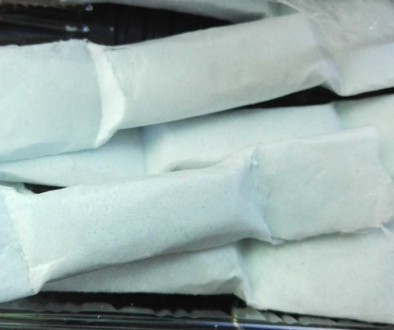Pastillas
Pastilyas are beloved soft milk candies that are a deliciously sweet legacy of the Spanish colonial period in the Philippines.
In the photo, the red wrapper is young coconut flavor, green is pineapple, white is jackfruit, and the clear plastic wrap is for the classic pastillas de leche.

Pastillas de leche are traditionally based on carabao’s milk. They are rolled in white sugar and wrapped in soft papel de Japon.
In Bulacan, pastillas are cooked in a large porcelain vat on a specially built concrete stove, with the vat sitting snugly on a hole so that no heat could escape at its sides from a wood fire underneath. A long bamboo paddle is used for constant stirring of the milk-sugar mixture. Toward the end of the cooking process, when the mixture begins to thicken, the stirring becomes more vigorous — with the paddle grasped firmly with both hands and the stirring coming from an arm-shoulder movement.
Pastillas de leche comes in a number of variations, among them pastillas with rind of dayap (lime), de queso (which is misleading as it contains egg as well as cheese), and de ube. Plain pastillas de leche tostado is another variation, but one which only means that the mixture was cooked a bit longer to a lovely caramel color and flavor.
Pastillas is only as delicious as the pure carabao’s milk that is its base. (This is the secret of excellence: whether in the case of a select ice cream maker in Manila whose forte is composed of only makapuno and ube flavors, in the fine white native cheese made in the lake towns of Laguna, or the sacrosanct baking chambers of Demel’s in Vienna, world capital of the confectioner’s art — there is no tampering with first-class ingredients.) Any substitution of carabao’s milk will result in unappetizingly hardened pastillas within a day of the making.


